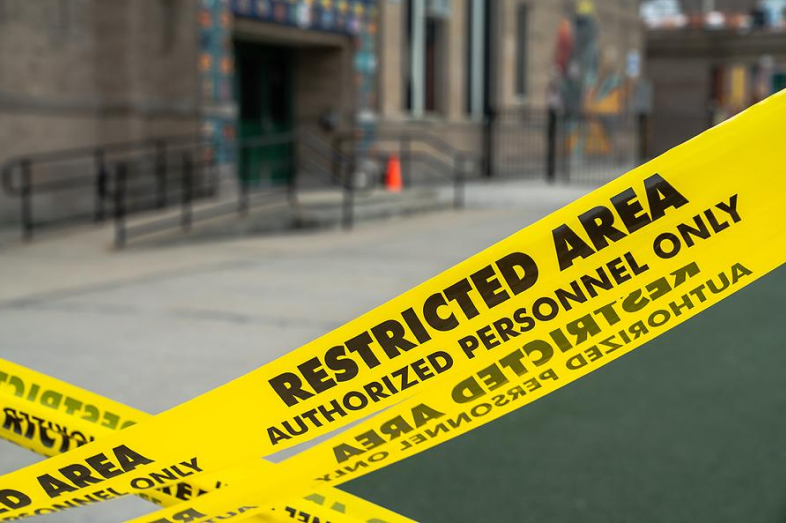
Responsible Coverage of School Shootings
How should reporters approach covering school shootings?
Photo credit: Lapse Life/Bigstock
There’s a question I’m asked all too often, and one I wish I never, ever had another reason to answer: How should reporters approach covering school shootings?
There is no shortage of research documenting the potential for harm in media coverage that glorifies perpetrators (or exacerbates fears about what is, statistically, an extraordinarily rare occurrence). That being said, when school shootings do happen, education reporters are likely to be the first journalists dispatched from their newsrooms to cover the story, and they will be asked to make rapid-fire professional judgments, often on tight deadlines and under enormous stress.
Here are my recommendations of best practices (explained below) for covering school shootings:
- Stick to the facts;
- Don’t add to the trauma;
- Don’t glorify to the perpetrator(s);
- Be especially careful when reporting what people say they saw or heard.
The shooting at Oxford High School in southeastern Michigan on Nov. 30 is understandably getting headlines. (According to The Trace, it was the 53rd school-related shooting of 2021). As is typical in the wake of these kinds of incidents, local education reporters are hard at work on key angles to this story, focusing on the four students who were killed and the seven other people wounded, and asking important questions about whether red flags or warning signs were missed about the shooter. At the national level, The New York Times’ Dana Goldstein looked at whether the lockdown drills at Oxford High prior to the shooting saved some lives (as the for-profit companies that sell such training programs are likely to claim).
Goldstein also noted questions as to whether the documented emotional toll of participating in such drills outweighs any perceived value to having been “prepared” to respond to what is still a statistically unlikely event for tens of millions of students. This is a significant concern that’s been raised by others, including John Woodrow Cox of The Washington Post, whose reporting on children and gun violence won the National Awards for Education Reporting’s top prize in 2019.
Here’s a quick rundown of my recommendations of best practices for covering school shootings:
- Stick to the facts. In the early stages of any story, details can be fluid. Be careful with ascribing motives for the shooting and with things like social media posts that are attributed to the shooter.
- Don’t add to the trauma. Remember you are talking with individuals – and often teens and young adults – who have experienced a terrifying event. Their emotional state can unduly influence their ability to consent to an interview.
- Don’t glorify the perpetrator(s). Minimizing the use of the alleged perpetrator’s name could actually help reduce the risk of copycat attacks.
- And here’s my advice for today: Human memory is notoriously fallible under the best of circumstances. It’s exponentially less reliable in times of trauma or stress. Be especially careful when reporting what people say they saw or heard, even first-person accounts.Early reporting from Oxford High has focused in part on Tate Myre, a popular junior and standout running back on the school’s football team. Witnesses at the school have said Myre charged the gunmanin an attempt to stop him. What is confirmed is that Myre was shot multiple times and died en route to the hospital in the back of a police car.More than 130,000 people already signed an online petition to rename the high school’s football stadium after Myre.At Columbine High School in 1999, student Cassie Bernall was reportedly asked by one of the shooters if she believed in God. She supposedly answered “yes,” moments before she was shot and killed. Soon after, conflicting details emerged. Within six months of the massacre, the Jefferson County Sheriff’s Office told the media: ”We strongly doubt that conversation ever occurred” between Bernall and the shooter.
As Vox reported in 2019 on the 20th anniversary of the Columbine shooting, the myth of “Saint Cassie” will likely persist regardless of any evidence that runs contrary to it. This is why journalists must be supremely cautious in the early hours, days, weeks, and months after a school shooting. These are, by definition, traumatic and chaotic events. We know from the intensive investigations that follow these incidents that details will likely come to light that unravel prior conceptions of what did – and did not – happen.
It’s likely that additional evidence from Oxford High, including surveillance camera footage, will emerge and give a more definitive picture of what happened during the shooting. But whether or not Tate Myre charged the gunman doesn’t change the horrific loss that his family, friends, and community have suffered with his death. Getting the facts right – and not just a compelling if unsubstantiated narrative fast – is the best way to honor his memory, and all of the victims and survivors of the shooting.


